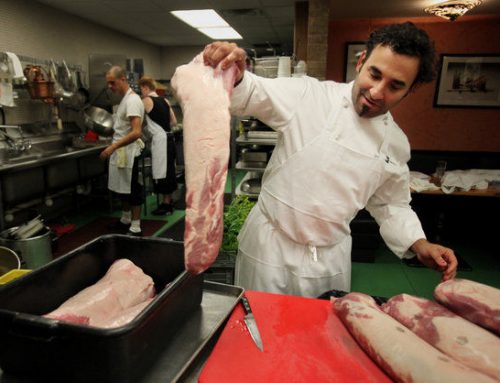Tent cities like Erie’s can be found all over the country.
“It is distressingly common,” said Steve Berg, vice president for programs and policy at the National Alliance to End Homelessness.
The alliance doesn’t keep statistics on the number of tent cities, but he said, “It has gotten worse since the start of the recession.”
In Erie County, scattered tents have been reported intermittently at other places near the railroad tracks and behind big-box stores in the upper Peach Street shopping corridor.
But the tent city community just west of Erie’s downtown is a relatively new phenomenon, said Mark Alexa, housing specialist for the Department of Human Services, the social services arm of Erie County government.
The occupants gave conflicting accounts about tent city’s founding, but Alexa said that community outreach advocates didn’t see it Jan. 27 when they conducted their point-in-time survey of the county’s homeless population.
The advocates counted 439 homeless people — 393 in shelters and 46 on the streets, Alexa said. That’s an increase from 2011, when they counted 405, including 33 on the streets.
Across the U.S., advocates counted 636,017 homeless people in 2011, the latest national statistics available. That’s a decrease of 13,900 from 2010, possibly due to a $1.5 billion federal stimulus program to get people into housing, the National Alliance reported.
But the homeless populations likely were undercounted, Alexa said.
“We’re going to miss people if they don’t want to be found on that night,” he said.
Other statistics point to a greater problem.
The U.S. Housing and Urban Development’s annual homeless assessment report showed that 1.65 million people spent at least one day in an emergency shelter or transitional housing program in 2010, the latest year for which those statistics are available.
“It’s tough to get your head around that such a rich country can have such impoverished folks, and that they’re so disenfranchised that they don’t see any hope that things can get better for them,” Alexa said.
“It’s tough living that day-to-day life, in fear of, ‘Is this going to be my last night on the street? Am I going to get robbed?’ ” he said.
Homeless outreach workers are working with one tent city resident, and continue to reach out to others to get them into shelters, drug and alcohol treatment and other services, he said.
Many shelters, however, won’t take people who are drunk or on drugs because of the disruptions they could cause, Alexa said.
One of the exceptions is the Erie City Mission, 1017 French St. Though sobriety is required for admission to the City Mission’s emergency shelter — it reduces the risk of arguments or altercations — the agency offers a cot in the dining room for anyone under the influence, said the Rev. Rick Crocker, the City Mission’s executive director.






Leave A Comment